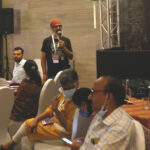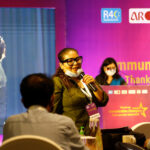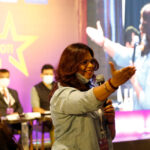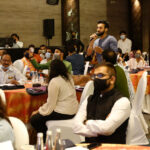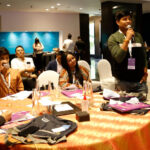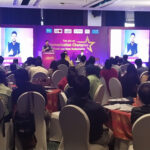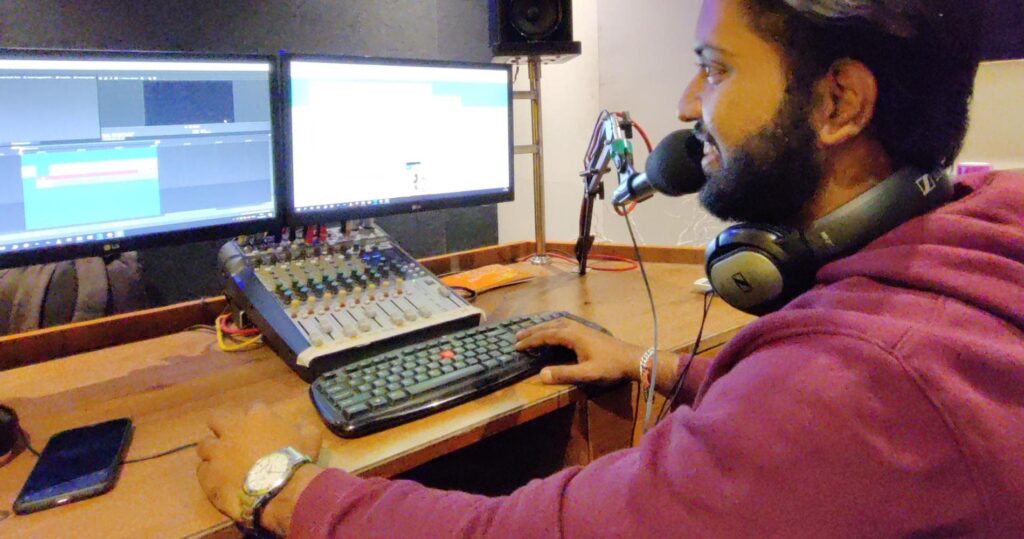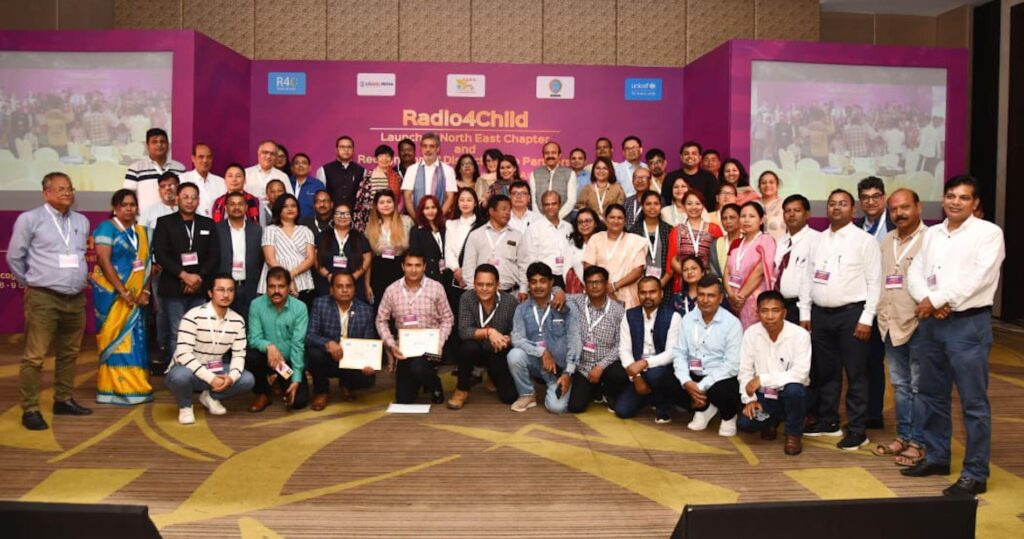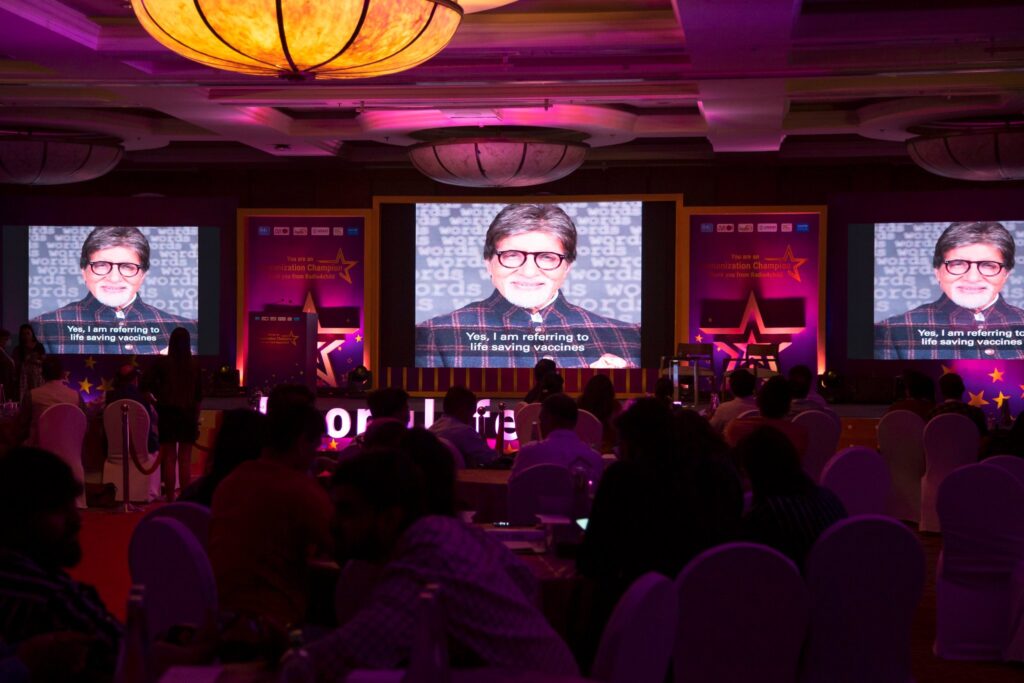How Indian radio fought against COVID-19
Written by Sonia Sarkar on 20 June 2022
Ten months after the WHO declared COVID-19 as a pandemic, and India had braved the first wave of the pandemic, people were already getting lackadaisical about observing COVID Appropriate Behaviour. Some said they’d developed immunity against the disease by getting infected, some were pinning hopes that the vaccine would be available any time soon and the vaccinated could just throw away their masks. One such rumour was shared by RJ Aliya Barua from Big FM, Assam – about her father receiving a message on Whatsapp message that the vaccine would be given as a Diwali gift by the Government of India. Barua was raising concerns about myths and rumours spreading around COVID-19 and COVID vaccination during one of the several interactions organized by the Ministry of Health and Family Welfare (MoHFW) with radio stations across the country.
This was in October 2020, and Barua would be busy on her station fighting misinformation and disinformation. Fast forward to to June 2021 – five months after India launched the world’s largest vaccination drive – the Nuh district of Haryana having a population of 14 lakh just had about 75,000 people who’d got vaccinated. It was not a happy figure, particularly at a time when India was fighting the treacherous second wave and there were demands from all to ramp up the vaccination drive despite the challenges. Health workers, vaccination teams, visiting villages would be attacked and chased out with sticks. There were conspiracy theories abound around the vaccine. One of them – that the vaccine would make the men impotent. The district administration went back to the tried and tested medium – radio to dispel misinformation.
Radio Mewat and Alfaz-e-Mewat are two radio community radio stations in the district that reach out to about 225 villages. In Mewat (the district was renamed Nuh in 2016), only 27 per cent of the households own TV sets, with most people either misinformed or out-of-touch with news. The stations dedicated almost six to seven programmes daily on their respective stations to dispel rumours, myths, misinformation/disinformation around the vaccines. Besides the Deputy Commissioner and other senior health officials delivering positive messages to assuage fears, the two stations engaged local influencers and religious leaders. Community concerns were heard from the ground and their misconceptions cleared from all possible angles – medical, societal and religious.
Since 2020, with the support of USAID, All India Radio, Association of Radio Operators of India (AROI), SSDS, UNICEF India through the Radio4Child platform has been continuously engaging radio as a “key stakeholder” of the communication strategy for COVID-19 prevention and mitigation.
UNICEF India conceptualized the Radio4Child platform in 2014, through which it has been strategically engaging radio professionals across the country through capacity building workshops, both online and on-ground meetings, to encourage them to come up with innovative and thought-provoking programming on child and maternal health. Initially supported by GAVI, the platform was later supported by USAID and other public-private partnerships.
Alka Gupta, Communication Specialist, UNICEF India, says, “Radio4Child has engaged with over 1,500 RJs and programming heads from All India Radio, private FM and community radio stations to sensitize and encourage them on producing programmes around the COVID-19 and vaccination and related issues like stigma and discrimination, Black Fungus, Remdesivir, Jan Aandolan campaign for COVID Appropriate Behaviour, child education, nutrition, Routine Immunization and mental health issues during the pandemic.”
Vignettes from a Workshop organized by Radio4Child with RJs from across India
The Public broadcaster, AIR, has a 91.9 per cent geographical coverage of the country, and serves 99.1 per cent of the population. It has a network of 467 stations including community radio stations and is broadcast in 16 regional languages besides English. Besides AIR, there are 371 private FM radio stations, which are quite popular with the youth and get get a captive audience amongst office-goers. India also has 290 operational Community Radio Stations covering approximately 90 million people in the country. Together, the three tiers of the “participatory media” have a listenership of more than 202 million in India.
Most of the RJs are celebrities in their own right, who have a massive fan following across age groups, which extends to the former’s social media presence as well. Madhvi Sharma, Senior Announcer, All India Radio, Jammu, says that young RJs turned out to be the best nudgers for positive behaviours during the pandemic as radio is a highly ‘engaging’ and ‘personal’ medium.
Leveraging on this reach, Radito4Child brought RJs, health experts, scientists and the common man together on to their Radio4Child platform, where on-air programmes – including jingles, RJ links, PSA, promos, talk shows in the short format – were further converted into informative videos and disseminated through Radio4Child social media platforms reaching out to hundreds of thousands followers. As a part of this engagement, radio networks also came up with long-term campaigns such as:
- Red FM’s flagship campaign – ‘Nation Ka Vaccination’. The network also had ‘Hausla High Rakh’ with the aim of spreading hope and inspiration during the second wave of COVID-19. The network also ran the Rise India Awards to honour COVID Warriors and urged listeners to treat them with respect.
- BIG FM launched the #BIGHUG campaign to provide virtual hugs to listeners and spread smiles and positivity to those affected by COVID.
- Radio City launched the ‘Plasma Helpline’ initiative in Delhi during the second wave. Through this initiative, the station aimed to connect COVID-19 patients and their families with plasma donors.
- Ishq 104.8 FM ran the “Do the Vaccine Baby” campaign to counter vaccine hesitancy.
- As a part of the #MissionUmmeed initiative, FM Tadka, provided verified and authentic information on critical medicines, emergency beds and oxygen. It also ran #MaaKiRasoi campaign in Prayagraj to provide food and medicines to those in need during the second wave of COVID-19.
- Radio Mirchi ran #TheShotIsHot campaign both on air and online through its digital platforms to raise awareness on COVID vaccines, through interviews of experts. RJ Naved also tweaked his regular Mirchi Murga programme to talk with COVID patients and others having mental health issues to cheer them up and create laughter. In Maharashtra, the station ran the Mirchi Gully Gang campaign through which it engaged slum children as ‘Khabris’ or informants for the station to discuss important news from their localities and fight stigma and discrimination.
At places where vaccine hesitancy has been high, RJs, particularly of community radio stations have lead by example by getting themselves vaccinated first. Ashwathy Murali, from Radio Mattoli, in Wayanad district Kerala, is one such RJ, who enthused the villagers to take the COVID-19 vaccination and walked the talk by being the first to do so herself. Nearly 20 per cent of the people in Wayanad are tribals. Ashwathy became a bridge between the tribals and the administration during the pandemic and the vaccination drive.
With the strong community bond built over the years, many radio stations’ staff and volunteers visited rural areas during the pandemic to demonstrate physical distancing norms, proper wearing of masks, and personal hygiene.
Radio, was one medium that cut out the cacophony filled with misinformation and fake news around the pandemic and emerged as the most credible source of information. No wonder that radio’s listenership in India shot up by 23 per cent to 2.36 hours every day and emerged as the preferred medium of communication for various government and public sector initiatives around COVID-19.
RJ Shashi from Radio Mirchi, Patna, says that radio scores above other mediums for the fact that it has the ability to have or provide a perception of one-on-one conversation between the listener and the RJ, which no other medium can provide. “During the pandemic, radio emerged as a leading platform for positive social and behavioural change – with and for children, parents and communities with specific emphasis on going beyond simply delivering messages, to engaging communities in self-reflection, dialogue, exchange and feedback – in their local language.”
Last month, and as a part of the continued celebrations of World Immunization Week – with the support of USAID – Radio4Child felicitated over 80 radio professionals for doing commendable work during the COVID-19 pandemic. Grammy Award Winner and UNICEF Celebrity Supporter Ricky Kej gave certificates of felicitation to the radio professionals from private FM and All India Radio. The event – Radio4Child Awards 2022 – was held in Mumbai on 6-7 June 2022.
A radio announcer from All India Radio, adds, “Crisis situations demand innovative approaches, and radio proved to be the hero in India’s battle against COVID-19. With its unique ability to establish a personal connection with listeners, radio became a powerful tool for dispelling myths, nurturing hope, and fostering behavioral change during the pandemic.”
